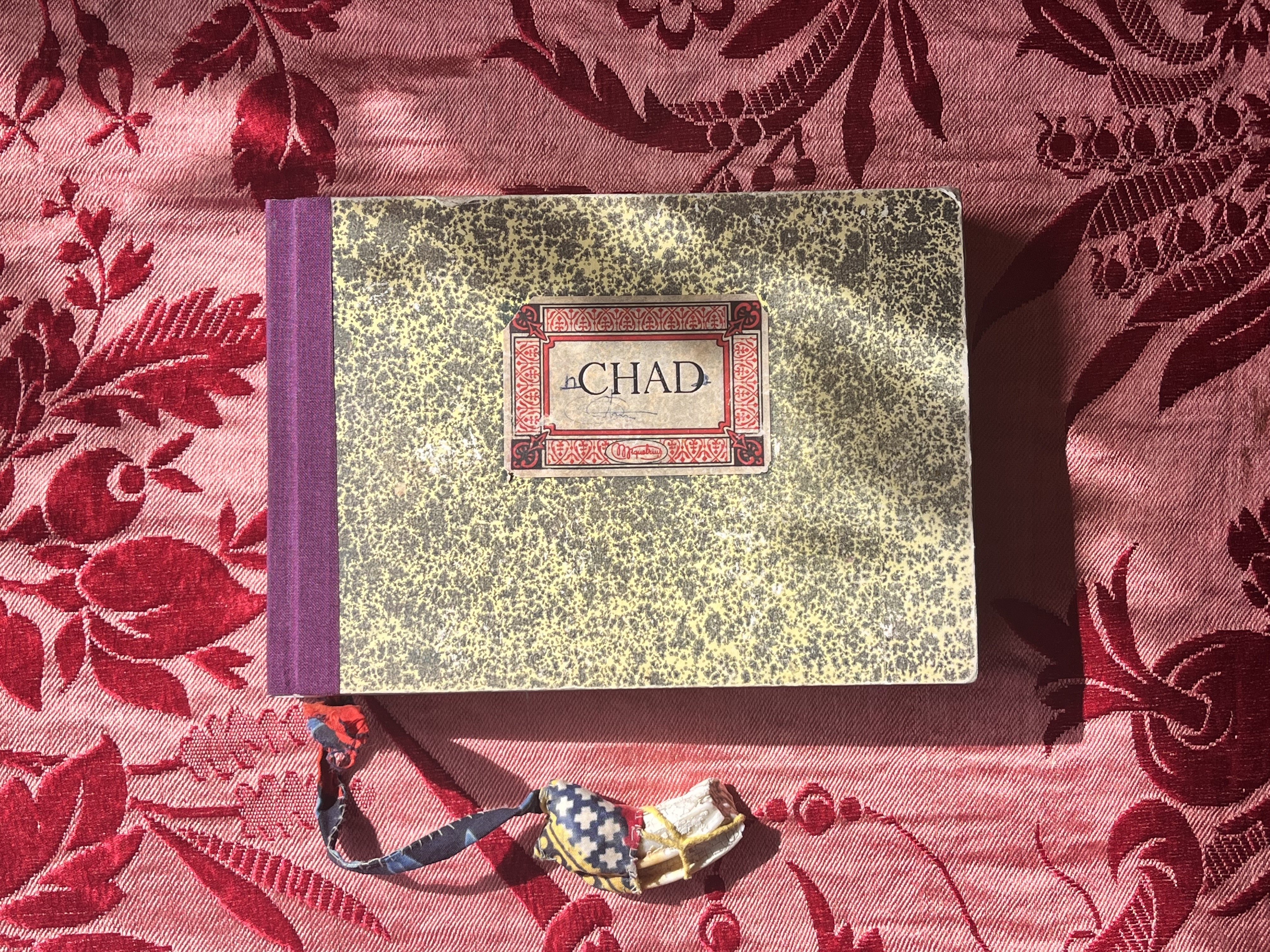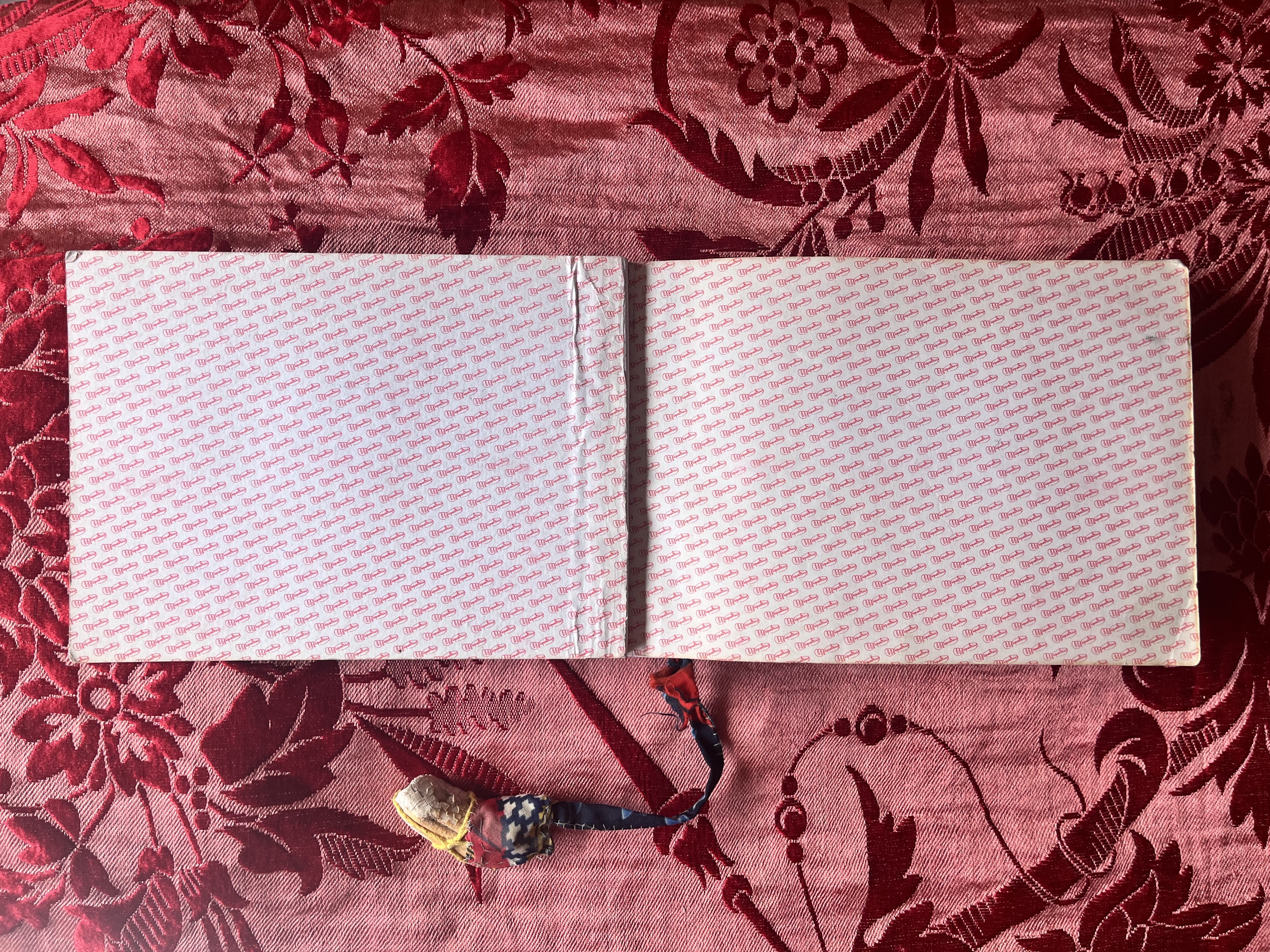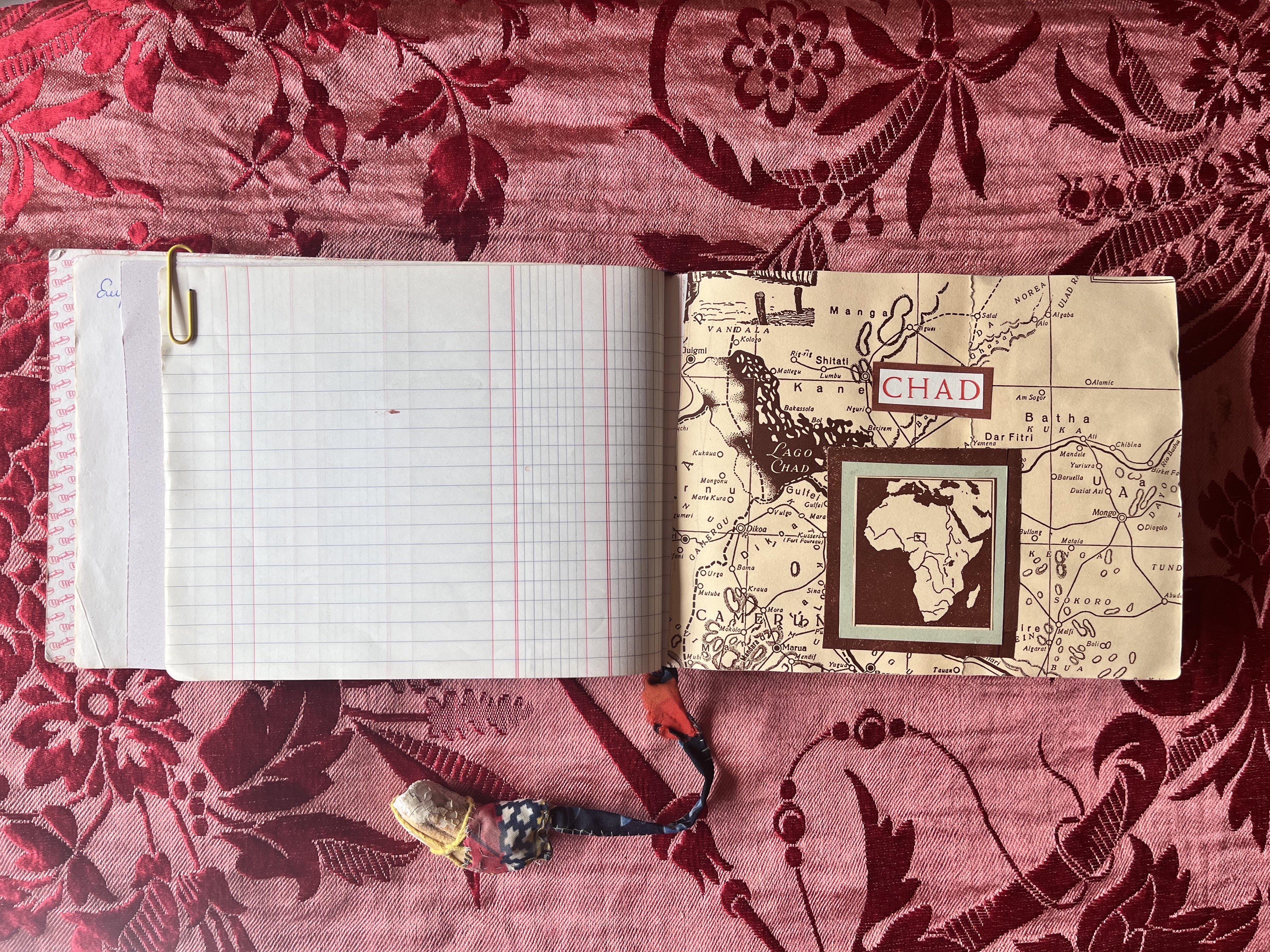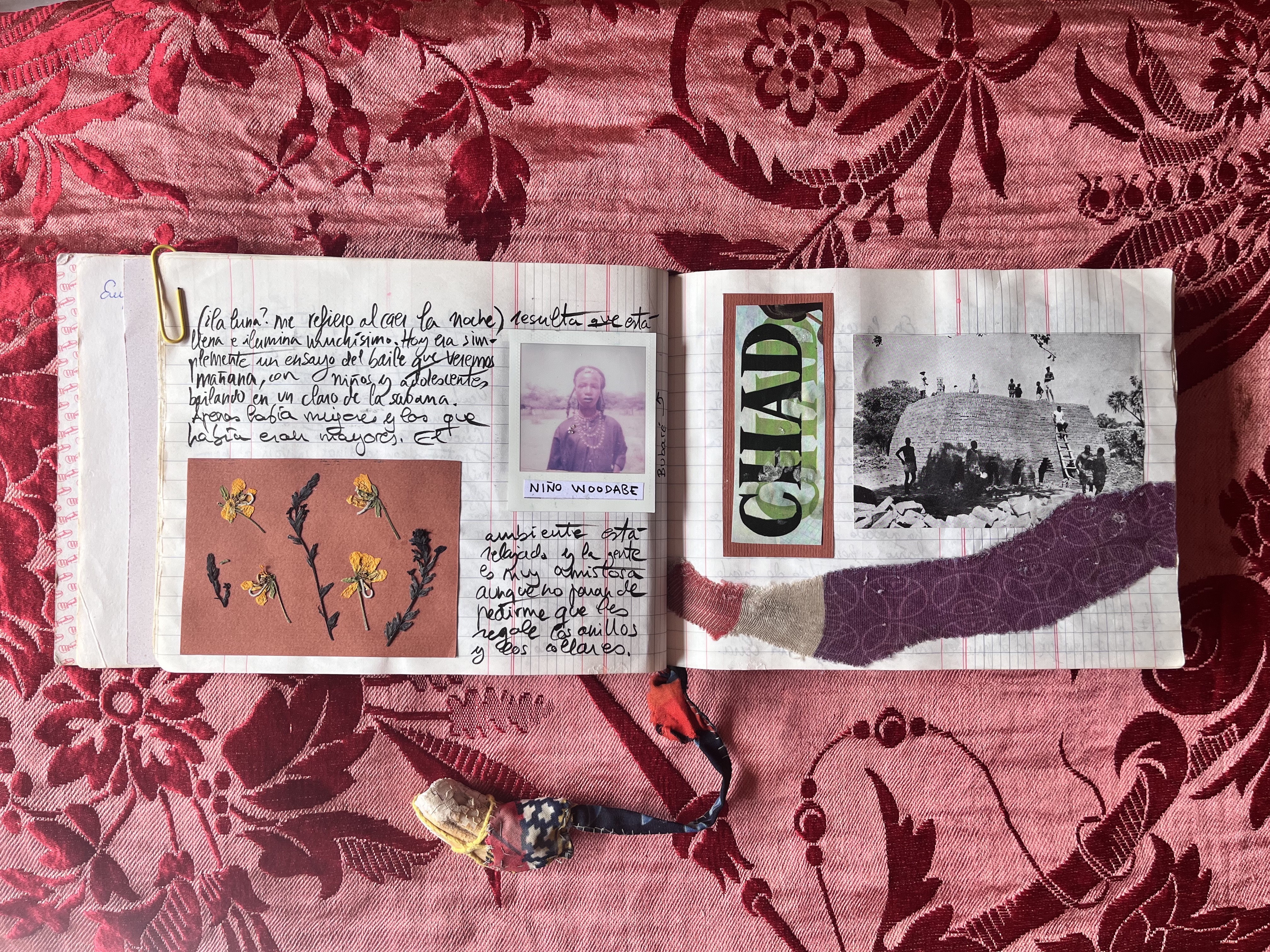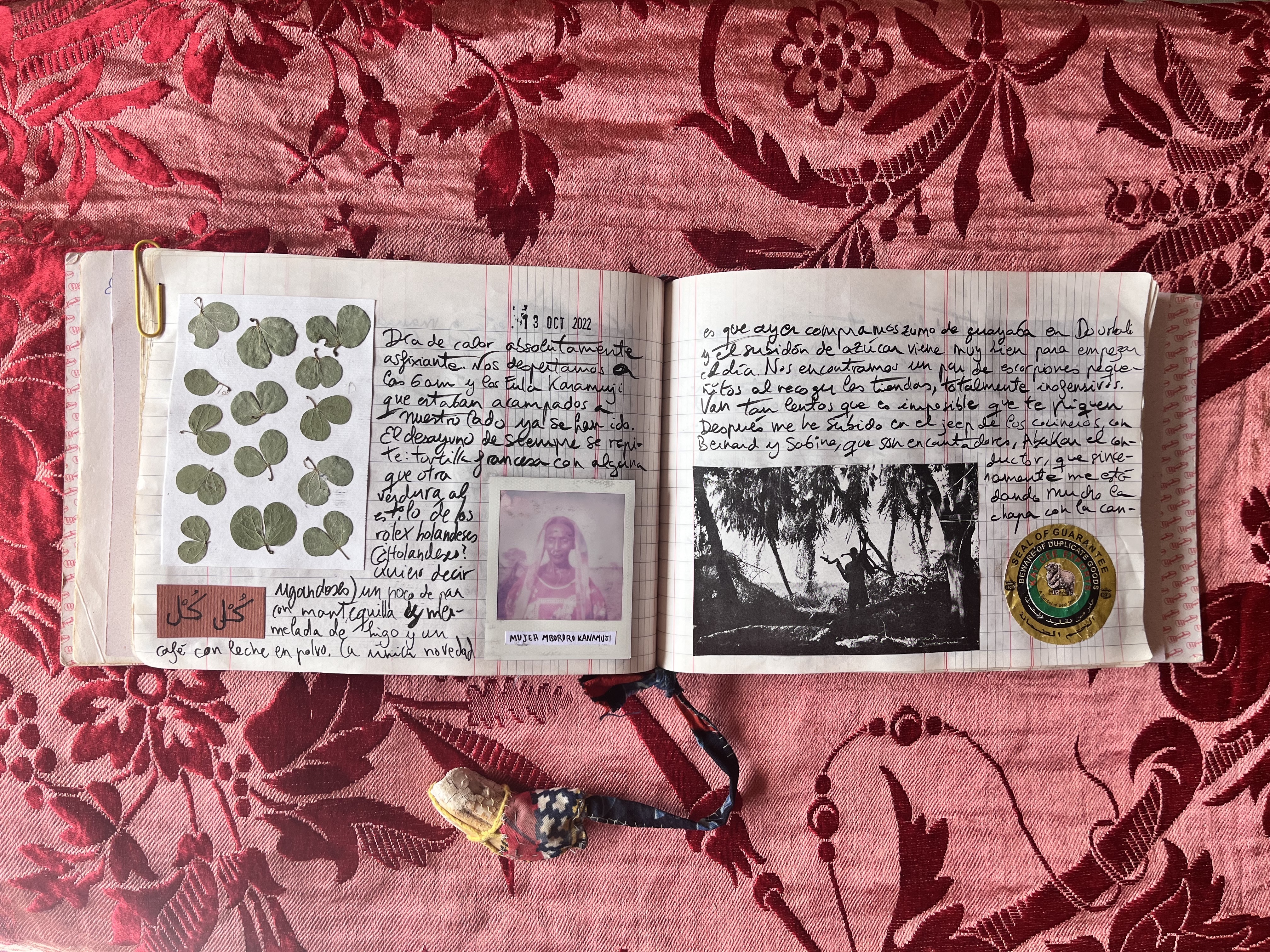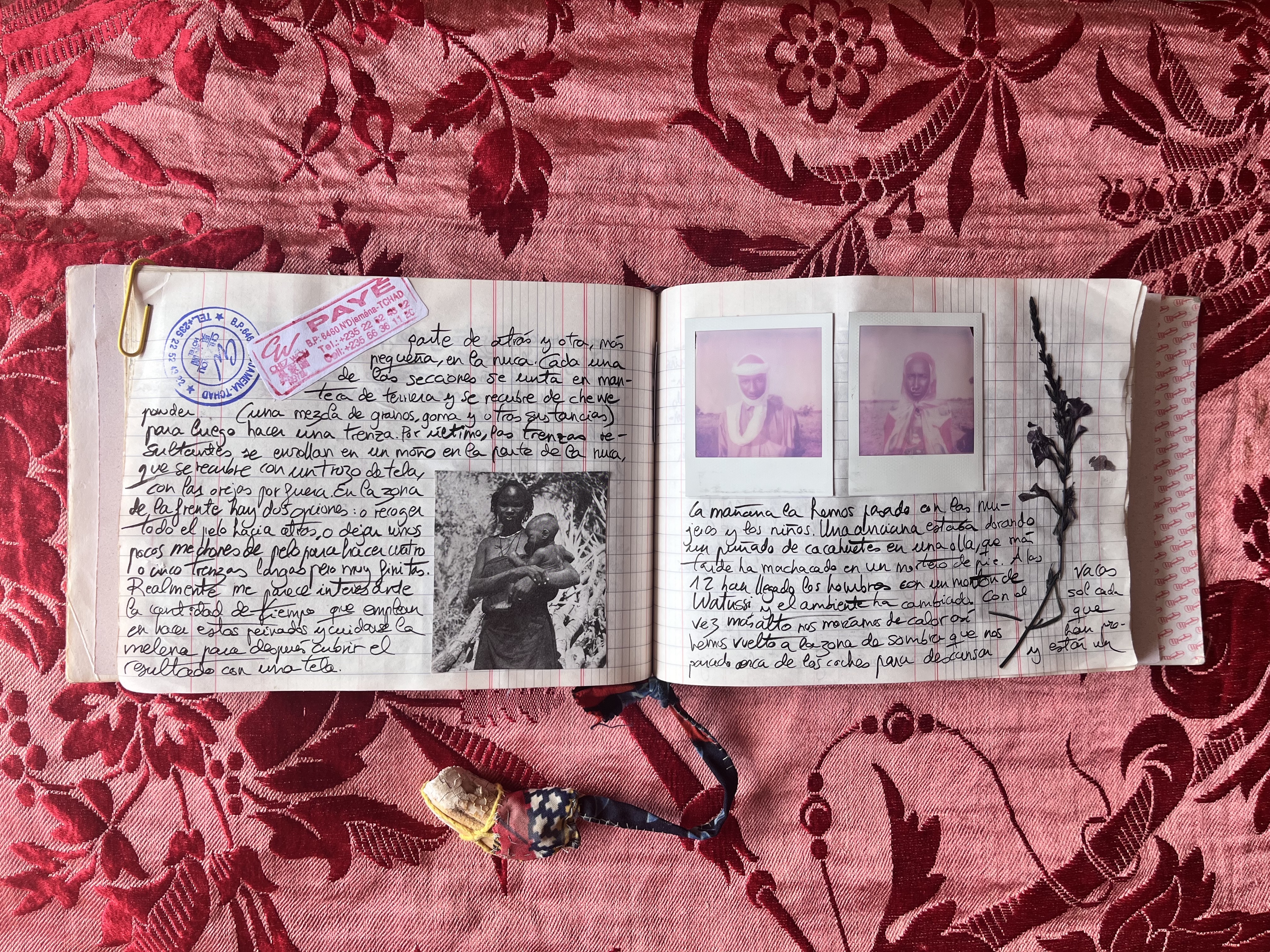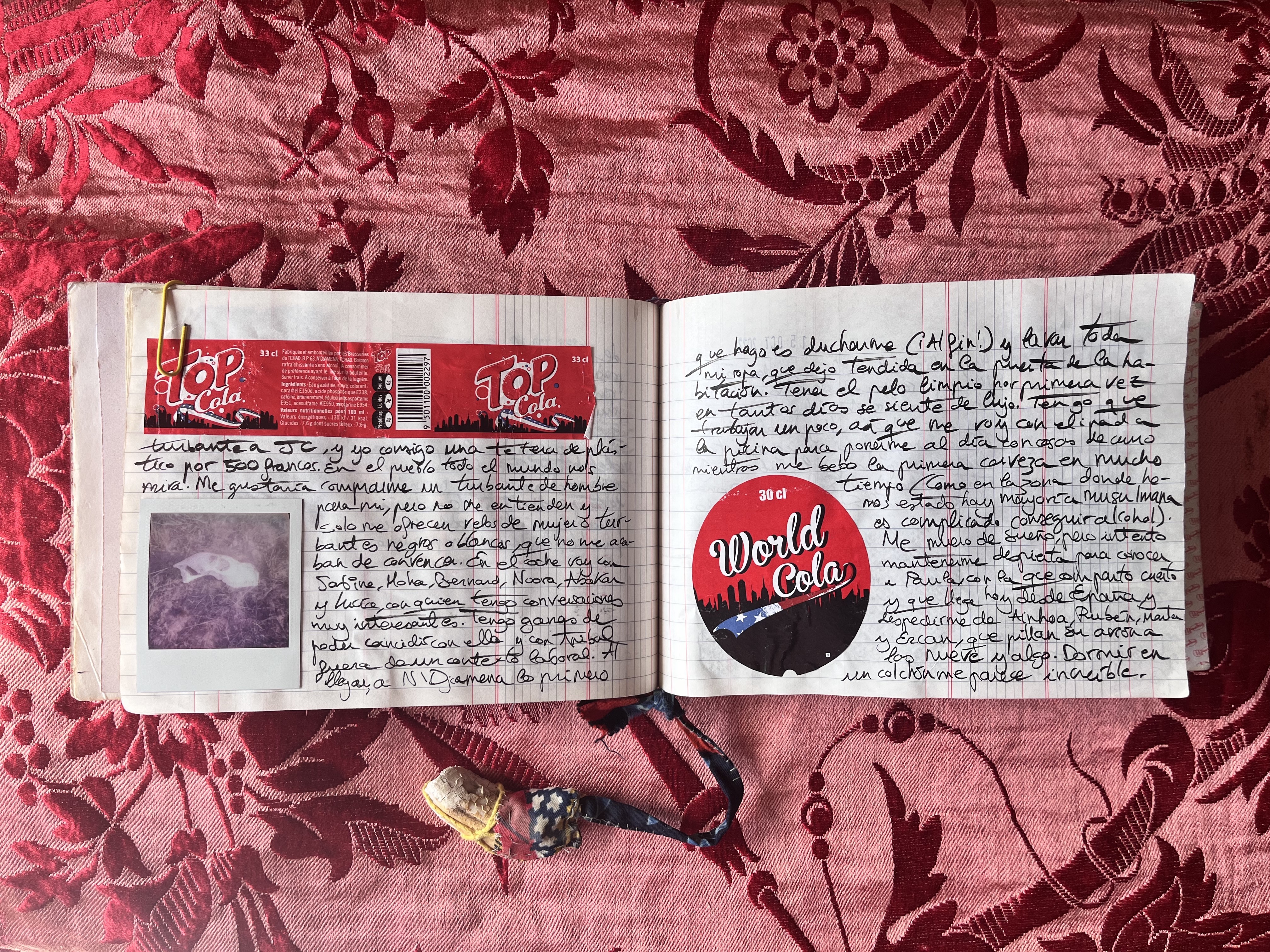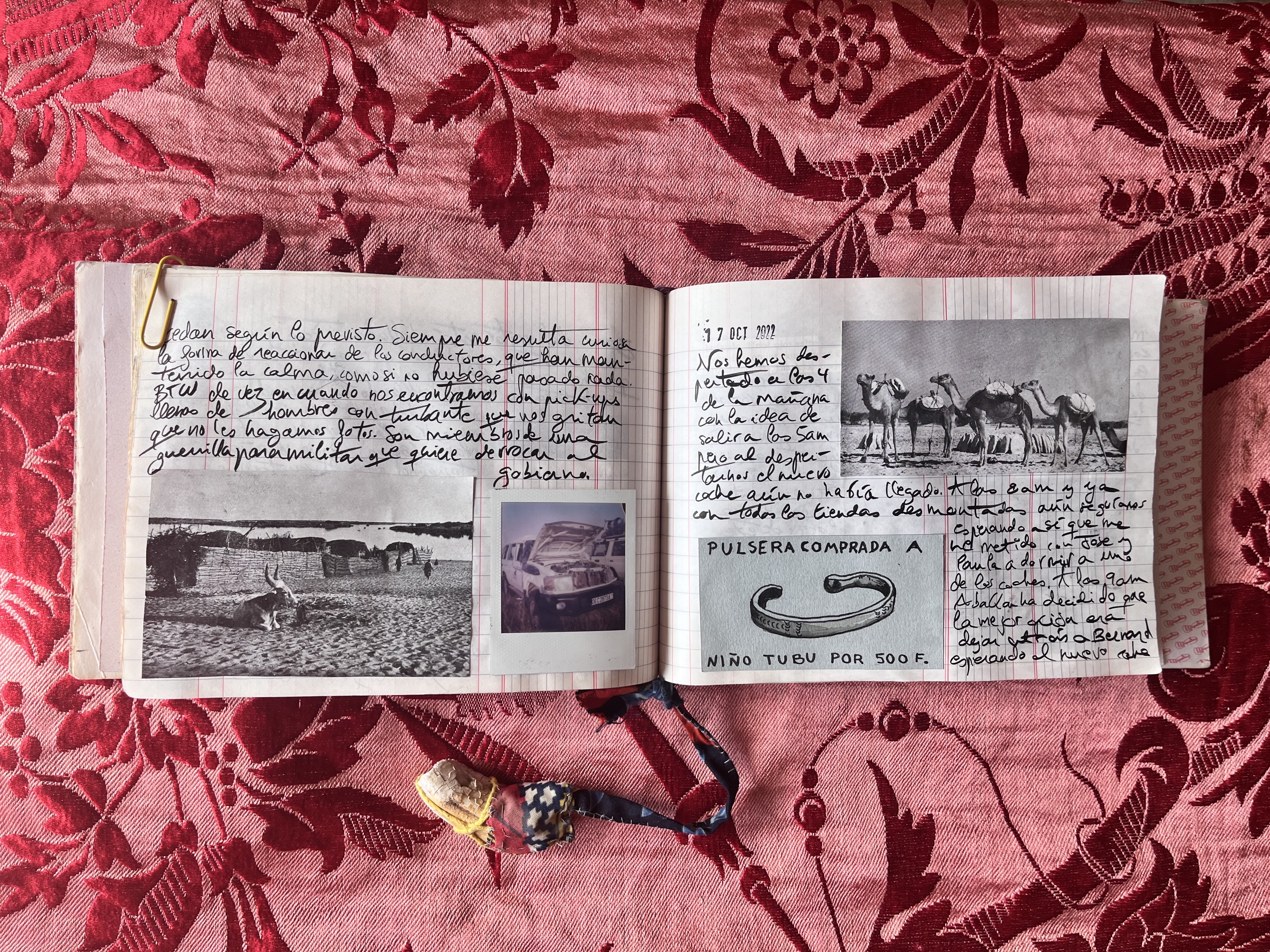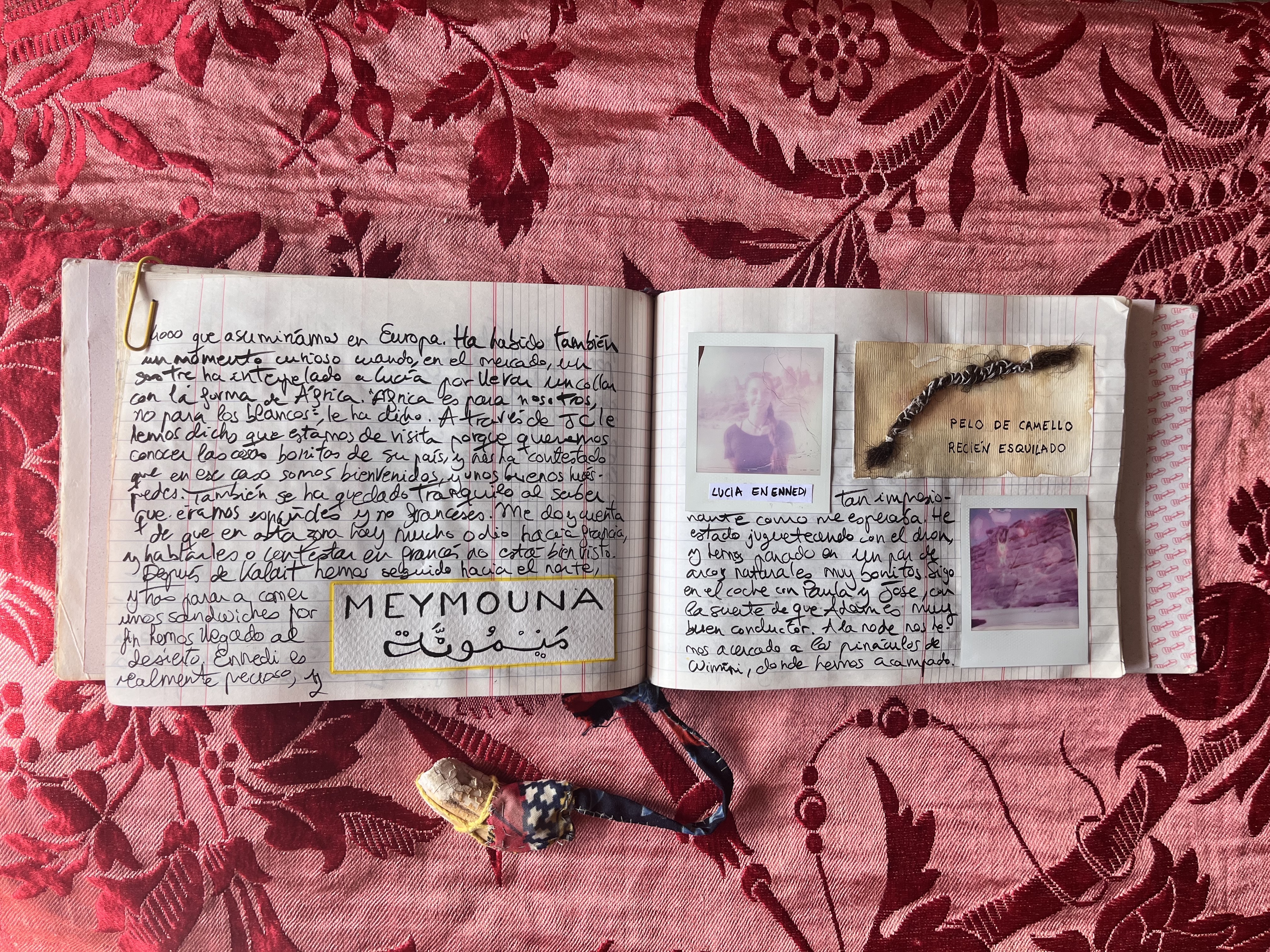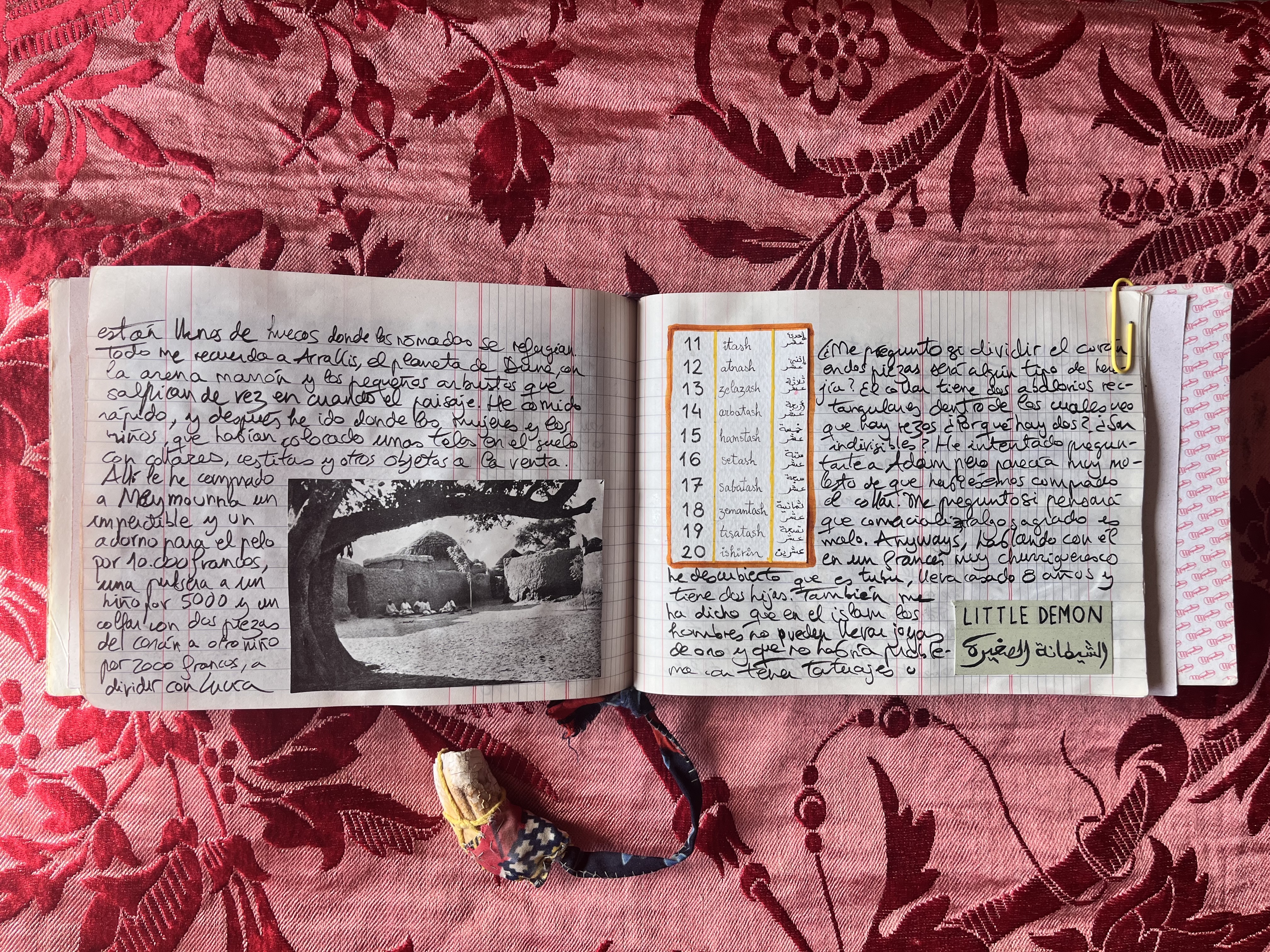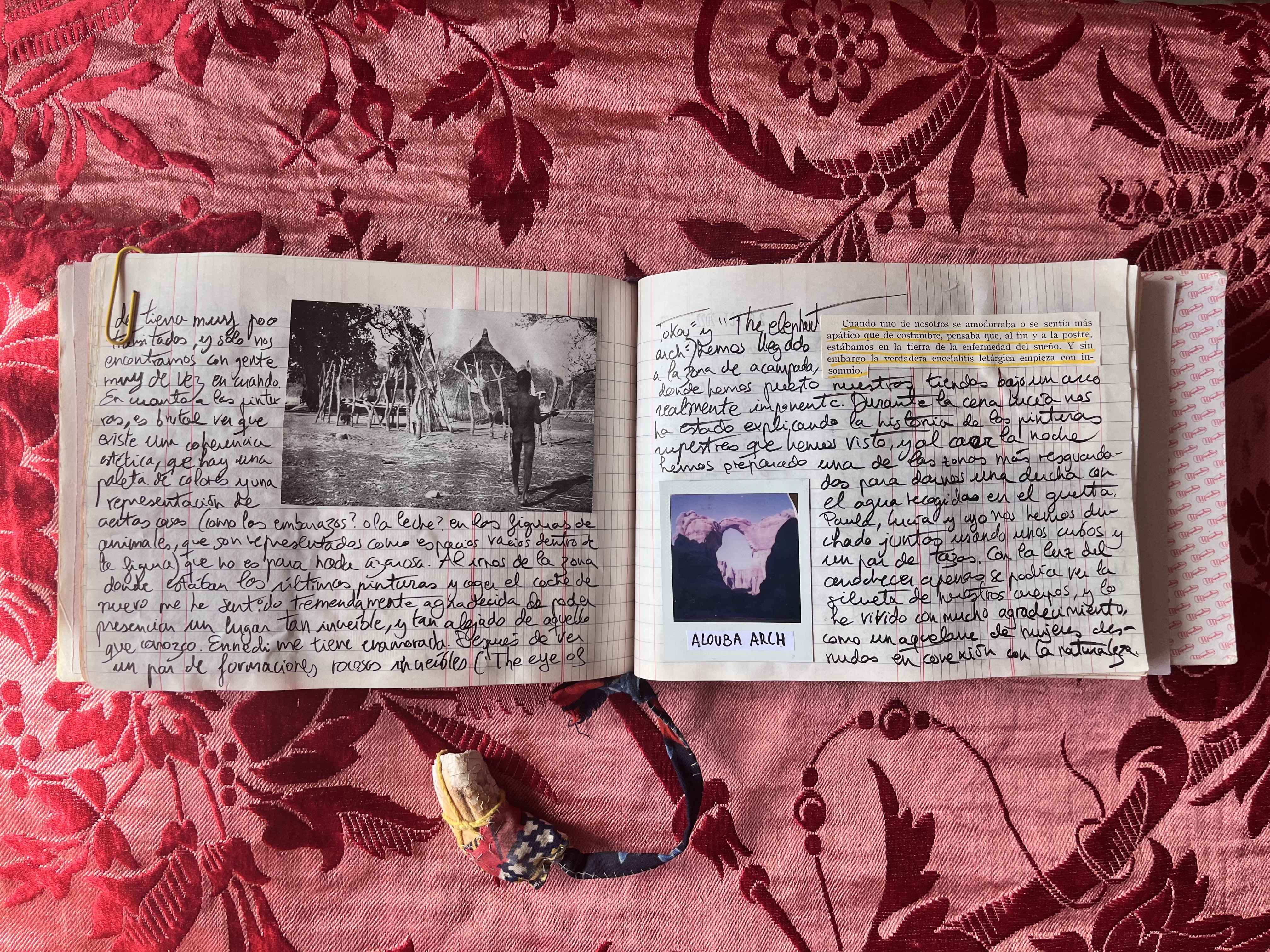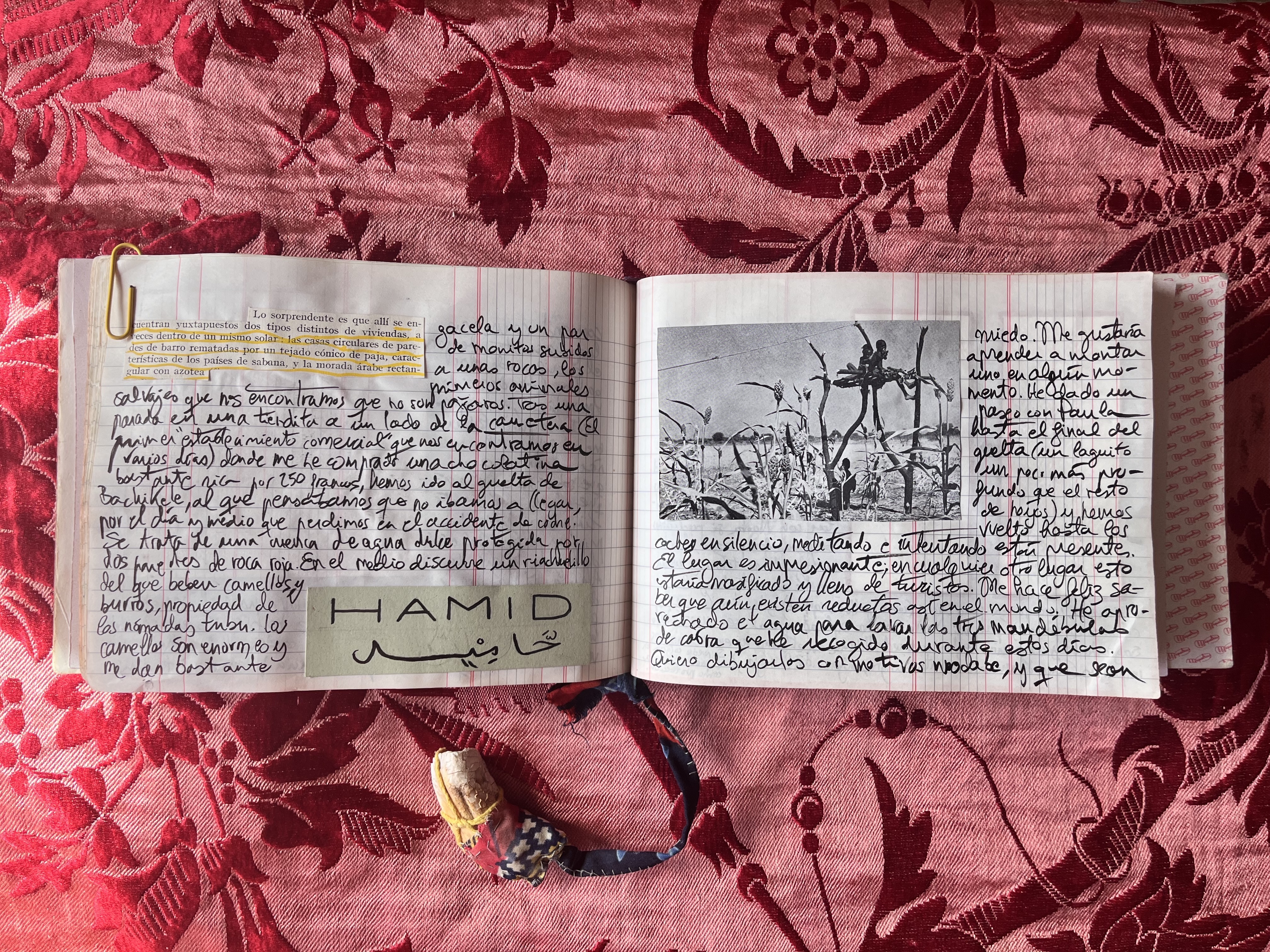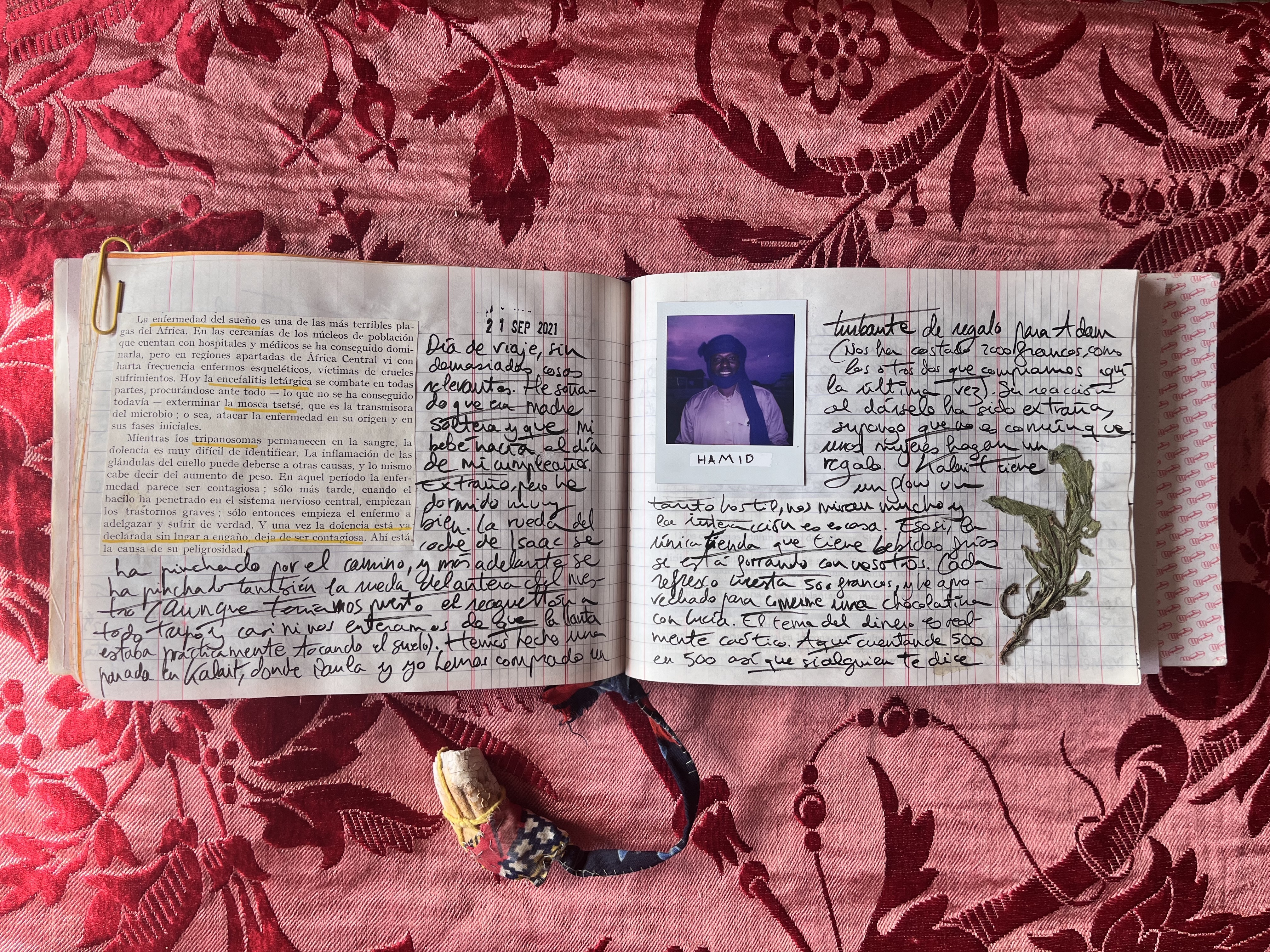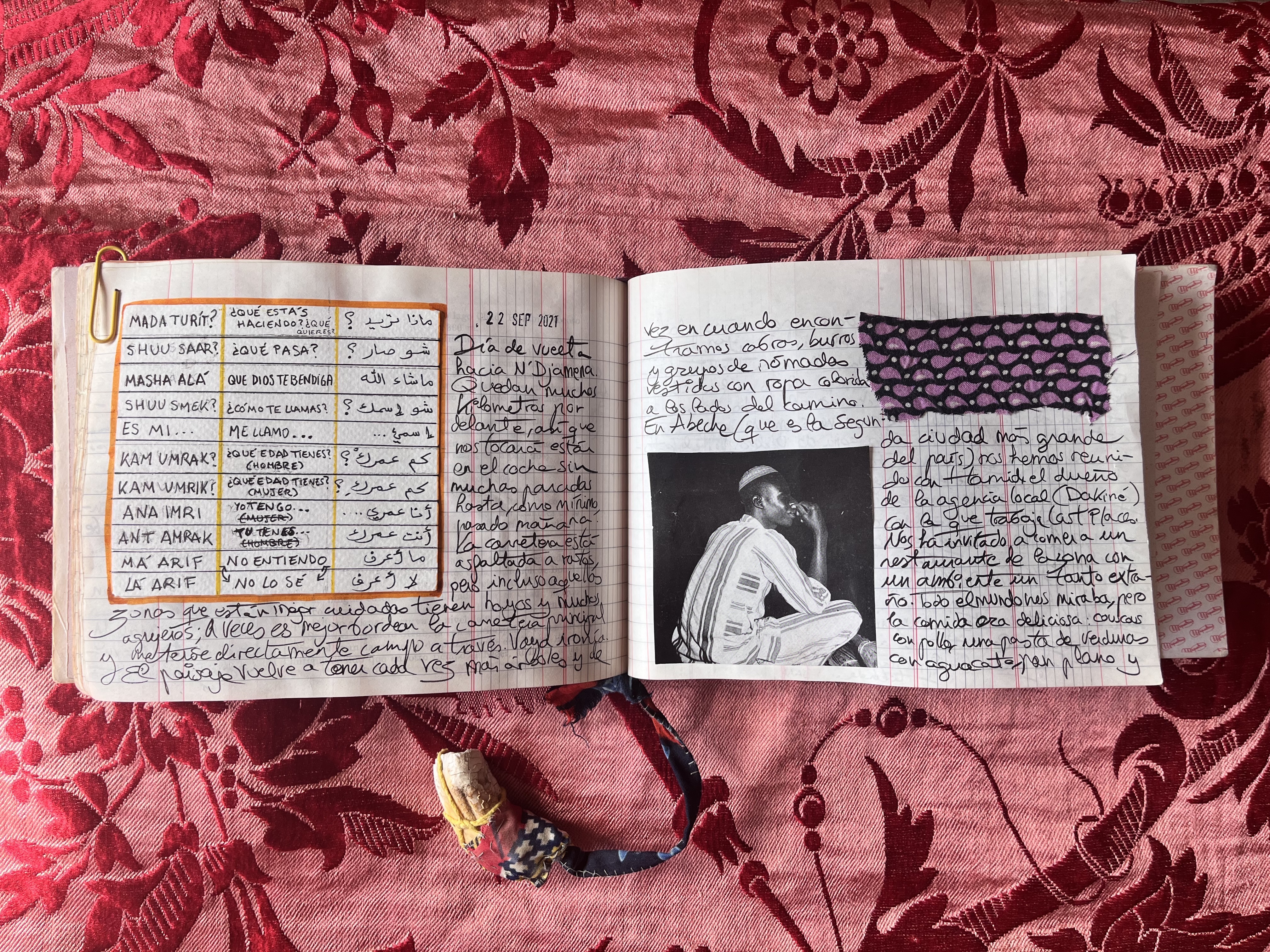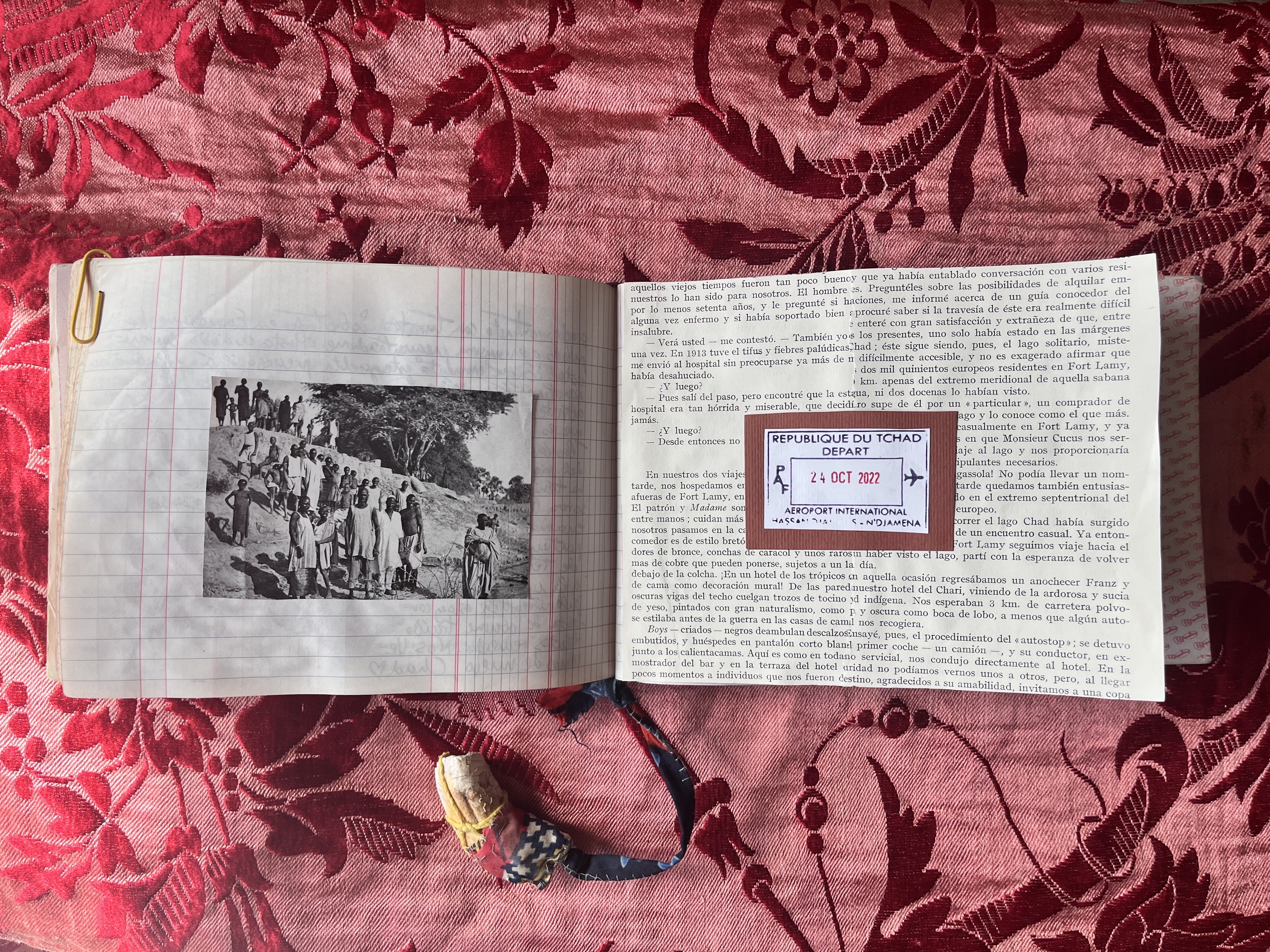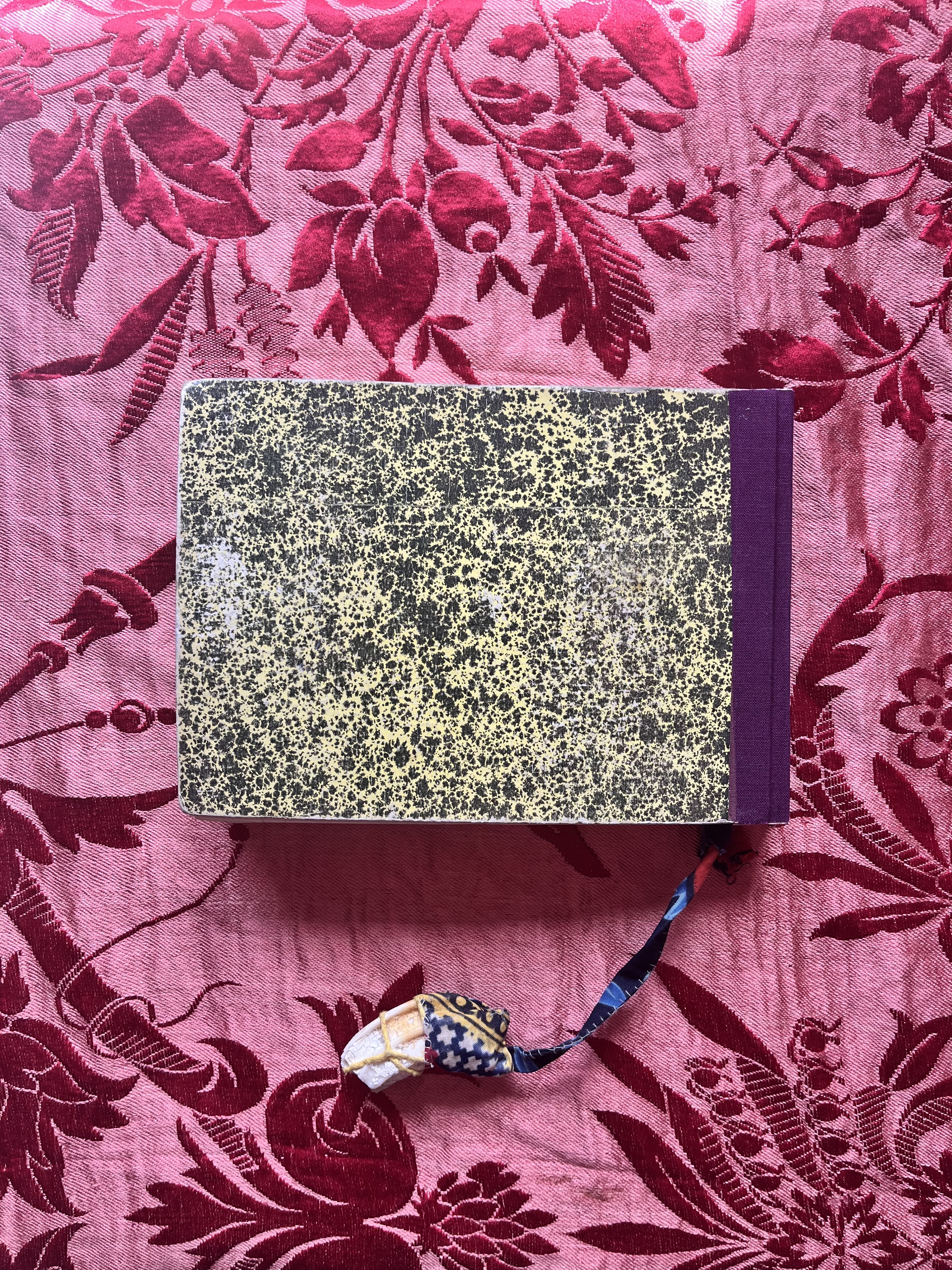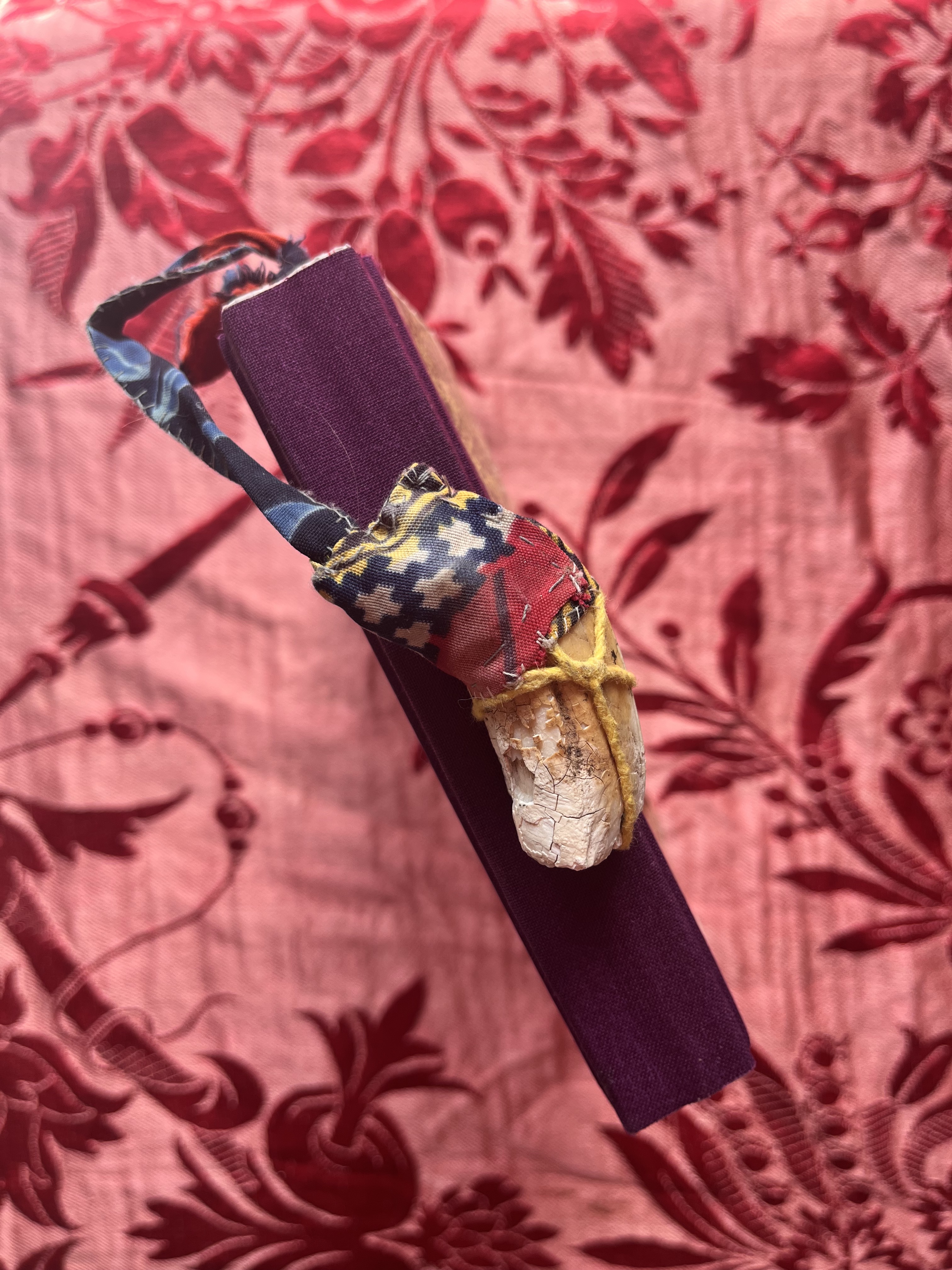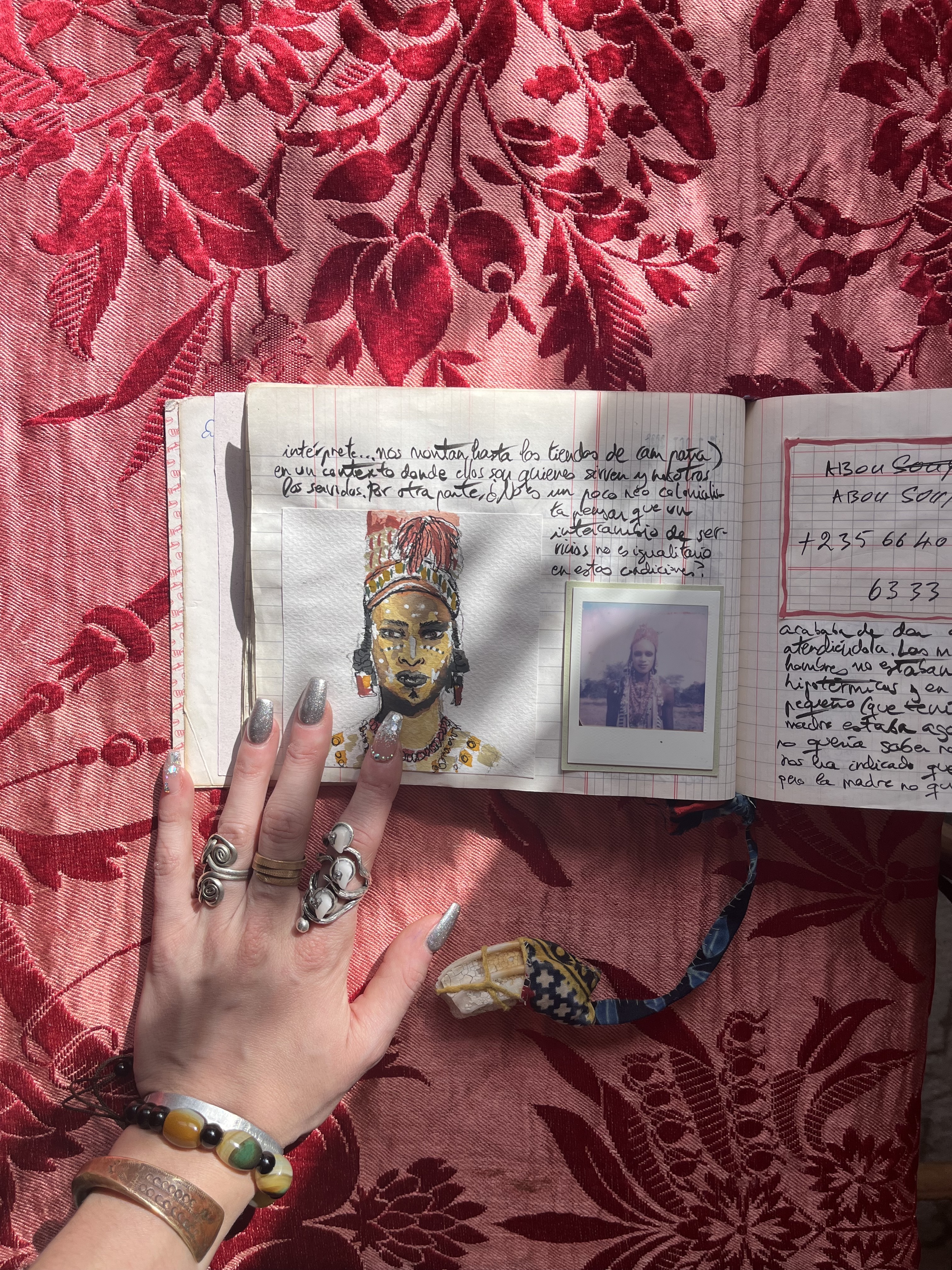Chad
7 - 24 October 2022
This notebook is made from an old account journal that I had been seeing at my parents' house for years. The yellowed pages, the aged cover and the horizontal format reminded me of those old colonial travelogues that I so romanticized during my childhood.
Wanting to reinterpret this concept and taking into account the country's past as a French colony, I got hold of a copy of “Lake Chad” by René Gardi, in which episodes of the author's journey through the country during the 50s are narrated, with the idea of cutting out the black and white plates that make up the boo and giving them a new meaning.
Gardi's narration, full of stereotypes and markedly ethnocentric biases, is now see from a new perspective when contrasted with the snapshots that I myself took during my trip, sixty years after the Swiss traveler passed through there.
Therefore, the notebook is made up of a series of Polaroid photos of nomads of the Woodabe ethnic group participating in the Guerewol, portraits of Tubu men and Kanamuji women, fragments of texts in Arabic and pieces of cloth, plants and feathers that I found along the way. Drawings of cave paintings that we visited as we entered the Ennedi desert, maps and diagrams with helpful information (from currency exchange to the geographical division of the different ethnic groups) and of course, the first-person narration of what I was seeing and living in the country. On the last page, a golden crescent found on the floor of a market marks the end of the work.
The idea for the binding continues to explore the idea of the classic travel notebook, with the cover letters made using the dry blow technique and the reinforcement of the spine in maroon cloth. The registration tape, made with a cow's tooth and pieces of cloth and rope found during the trip, is established as a practical but also decorative element, wanting to break with the two-dimensionality of paper to turn the book itself into an object.
7 - 24 October 2022
This notebook is made from an old account journal that I had been seeing at my parents' house for years. The yellowed pages, the aged cover and the horizontal format reminded me of those old colonial travelogues that I so romanticized during my childhood.
Wanting to reinterpret this concept and taking into account the country's past as a French colony, I got hold of a copy of “Lake Chad” by René Gardi, in which episodes of the author's journey through the country during the 50s are narrated, with the idea of cutting out the black and white plates that make up the boo and giving them a new meaning.
Gardi's narration, full of stereotypes and markedly ethnocentric biases, is now see from a new perspective when contrasted with the snapshots that I myself took during my trip, sixty years after the Swiss traveler passed through there.
Therefore, the notebook is made up of a series of Polaroid photos of nomads of the Woodabe ethnic group participating in the Guerewol, portraits of Tubu men and Kanamuji women, fragments of texts in Arabic and pieces of cloth, plants and feathers that I found along the way. Drawings of cave paintings that we visited as we entered the Ennedi desert, maps and diagrams with helpful information (from currency exchange to the geographical division of the different ethnic groups) and of course, the first-person narration of what I was seeing and living in the country. On the last page, a golden crescent found on the floor of a market marks the end of the work.
The idea for the binding continues to explore the idea of the classic travel notebook, with the cover letters made using the dry blow technique and the reinforcement of the spine in maroon cloth. The registration tape, made with a cow's tooth and pieces of cloth and rope found during the trip, is established as a practical but also decorative element, wanting to break with the two-dimensionality of paper to turn the book itself into an object.
